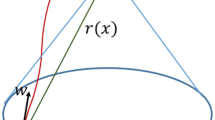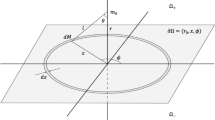Abstract
REGENER1 has found that cosmic rays can be observed at 230 m. below the level of Lake Constance. If these rays, as is generally assumed, consist of electrons (not of protons) the great penetrating power raises a serious difficulty in the adopted theory of electronic motion, that is, Dirac's equation. Using this equation, Heitler and Sauter2 have shown that a beam of very fast electrons (with an energy E 200 mc2) should penetrate not more than 1 m. of water when all kinds of absorption processes are taken into account.
This is a preview of subscription content, access via your institution
Access options
Subscribe to this journal
Receive 51 print issues and online access
$199.00 per year
only $3.90 per issue
Buy this article
- Purchase on Springer Link
- Instant access to full article PDF
Prices may be subject to local taxes which are calculated during checkout
Similar content being viewed by others
References
E. Regener, Phys. Z., 34, 306; 1933.
W. Heitler, and F. Sauter, NATURE, 132, 892, Dec. 9, 1933.
NATURE, 132, 282, Aug. 19, 1933.
Author information
Authors and Affiliations
Rights and permissions
About this article
Cite this article
BORN, M. Cosmic Rays and the New Field Theory. Nature 133, 63–64 (1934). https://doi.org/10.1038/133063b0
Issue Date:
DOI: https://doi.org/10.1038/133063b0
This article is cited by
-
A New Hard Component of the Cosmic Ultra-Radiation
Nature (1934)
Comments
By submitting a comment you agree to abide by our Terms and Community Guidelines. If you find something abusive or that does not comply with our terms or guidelines please flag it as inappropriate.



